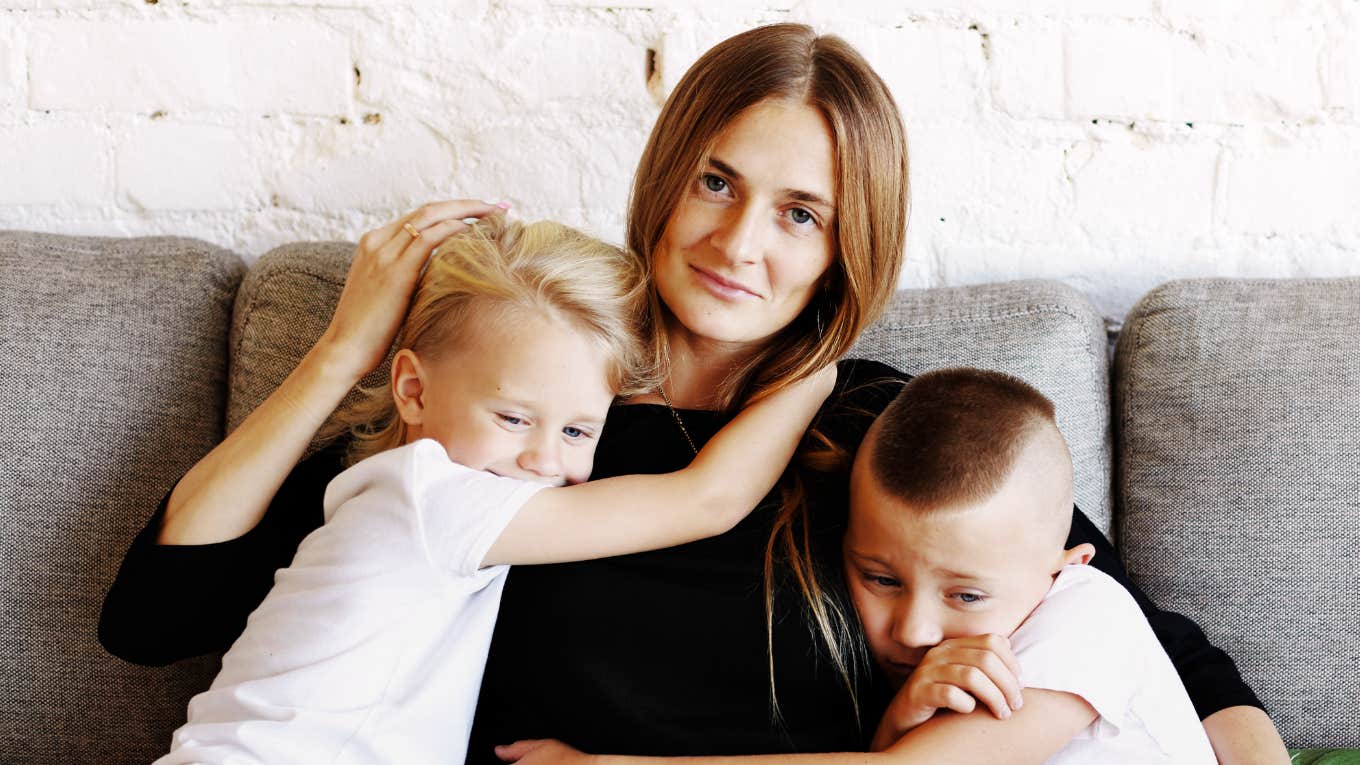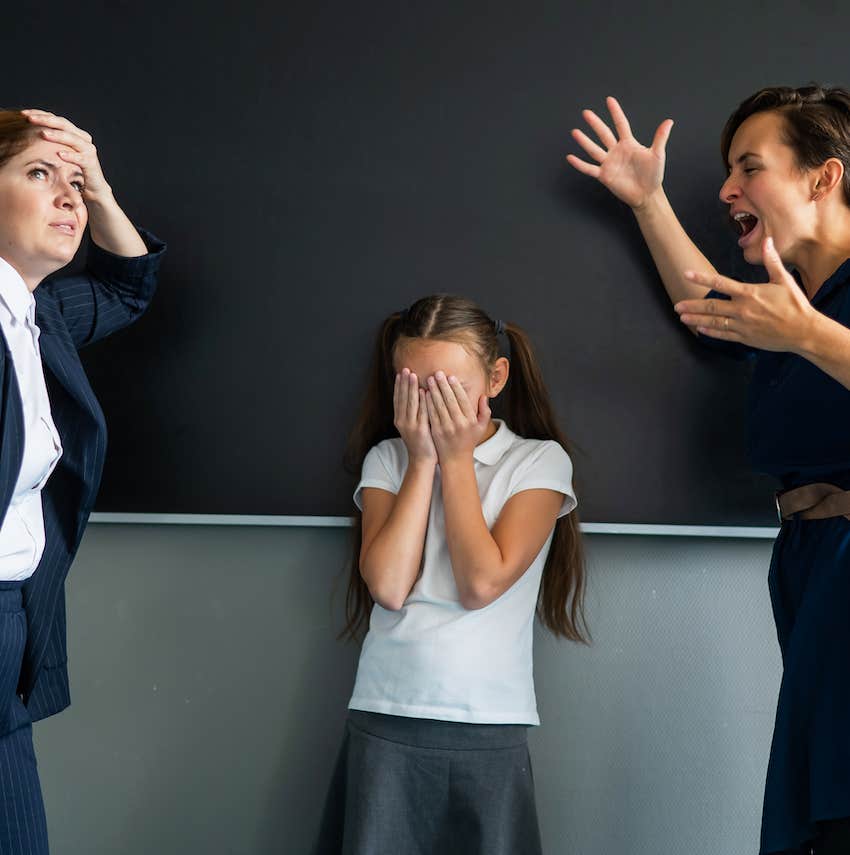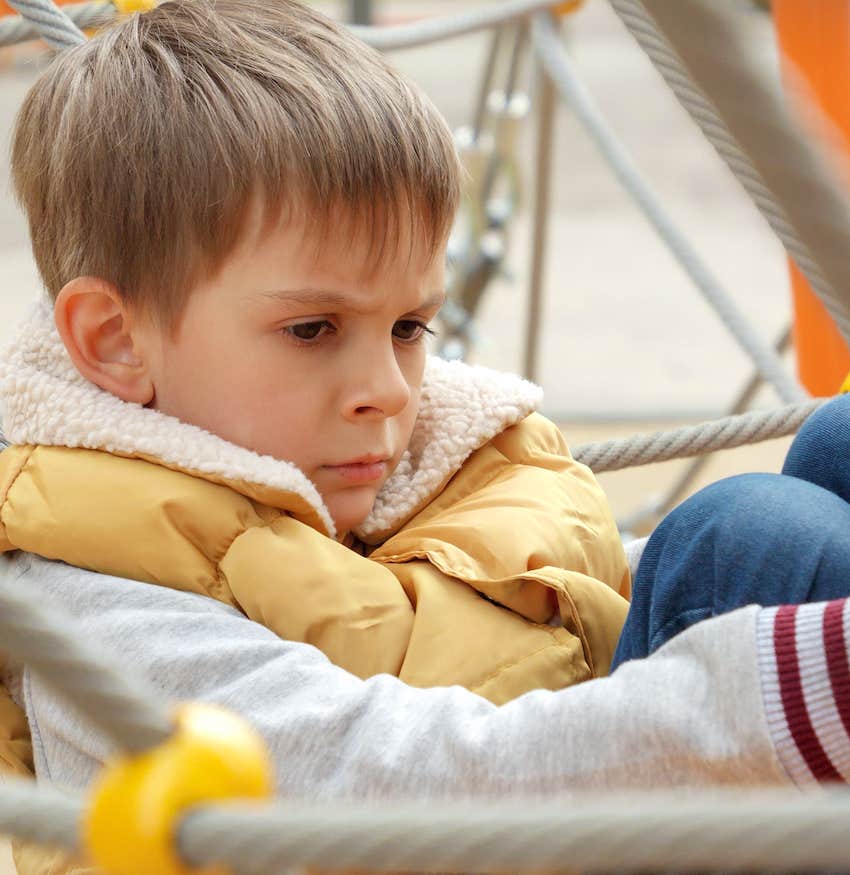The Hardest Emotion To Parent Kids Through And 4 Ways To Be Great At It
Don't let emotions derail a wonderful child's development.
 shurkin_son | Shutterstock
shurkin_son | Shutterstock There’s nothing quite as worrisome for parents as anger issues in kids. Anger is one of those uncomfortable emotions that no one wants to admit that they deal with, especially in their children. Great parents know they need to help their kids manage their anger for a healthy future.
We’re all expecting “the terrible twos” when temper tantrums and meltdowns are seen as the norm. From there, as children develop, we expect them to outgrow these behavioral problems and start to use their words to express their feelings. But they can't do that without our guidance.
Four ways great parents help their kids express and manage anger
Finding solutions for anger problems begins with a process of elimination, ideally during the first decade of life.
1. They maintain structure and good nutrition
All children need structure and routines in daily life. This means:
- Regular mealtimes (to ward off hunger).
- Sleep routines (to avoid fatigue).
- Playful time with caregivers (to avoid disconnection).
- Up to four clear family rules and reasonable consequences (based on your family values).
If any of these critical elements are missing, address them.
"By letting your children share their thoughts and feelings with you, it’s an opportunity to validate those feelings for them. A child, like an adult, wants to believe who they are talking to understands them. While adults can infer from body language and other cues, children need concrete responses. By saying you understand how they feel and what they are saying specifically, it validates those feelings." explained psychotherapist Mindi Lampert.
Pre-schoolers (children under the age of 5 or 6 years) are only just beginning to develop the capacity for emotion regulation: the ability to identify, understand, and talk about their feelings.
This means even your highly verbal 4-year-old is not going to be able to say, “Mommy, I’m angry because Suzie broke my tower! Please help me!” Nor should you expect them to.
So, if your child is a Preschooler or a tween, your job is to help them learn to regulate — notice, label, make sense of, and express — their emotions.
However, children whose hearing or speech is delayed will struggle to learn what you are trying to teach them, and they will be stuck using the same behavior that worked from infancy on — crying, kicking their feet, screaming — to express themselves.
When your child doesn’t have the words, acting out is what they must do to get help. If your child is acting out and has language delays, consult a apeech and language therapist as soon as possible.
2. They keep an eye out for sensory processing issues
Maybe they’re fine bathing one day but completely melting down the next. Or, they’re fine all day at school but fall apart the minute they get home.
When emotions seem unpredictable, a child may have sensory processing differences that need to be understood and addressed. No, this does not mean that they have Autism either.
Children with sensory processing differences experience life as unpredictable, making outbursts seem equally unpredictable, as suggested by research in The Journal for Nurse Practitioners. Consider consulting an occupational therapist who understands sensory processing.
3. They look for specific causes of anger
 Reshetnikov_art via Shutterstock
Reshetnikov_art via Shutterstock
If the teacher reports angry conflicts or defiant behavior every time your child needs to transition (e.g., come in from recess), try something new, work independently, or interact with peers (e.g., recess, group work), you may want a better understanding of their learning needs.
You may also experience problems with homework. The leap from play in Kindergarten to desk work in Grade 1 can be large, so it is not uncommon for children who have never had anger issues in Pre-School to have some problem behaviors at this time.
However, if angry outbursts persist beyond a reasonable adjustment period (a couple of months), this may be a sign that they are having a hard time with some aspect of learning. This can also pop up as concepts become more challenging in later elementary as well.
Talk with the teacher to get clear on what happens in terms of behaviors and why something might trigger them.
If the problem does not resolve quickly, consider a psychoeducational assessment done by a clinical psychologist who specializes in conducting these assessments with children, as described in School Psychology Review.
Learning needs can be addressed well before they become mental health needs if they are addressed early.
4. They consider mental health as a factor, when indicated
You’ve established healthy routines and expectations and ruled out communication, sensory, and learning issues, but you’re still struggling to help them learn to regulate their emotions.
Or their outbursts are harmful, too frequent/intense/lengthy, or disrupting family life. Or, worse, their anger seems to have turned inwards. It feels like they’re upset all the time, but they hold it in and are depressed and withdrawn.
It’s time to consider working with a counselor or mental health professional who specializes in children. Choose someone who will include you in your child’s treatment. Why? Because your child needs you to learn how to understand and support them.
Understanding anger issues in kids
Think of the last time you felt angry — someone cut you off in traffic, almost causing an accident. Or maybe you stepped on a Lego brick.
You would probably feel some degree of anger in both of those situations. You think: “What are they doing? They could kill someone driving like that!” or, “How many times do I have to remind them to put away the Legos? I’m throwing it all out!”
You’ve been there, I’ve been there too. We all have. Those scenarios are “triggers.” They initiate the angry feelings, thoughts, and behaviors that follow.
Anger and aggression happen when we perceive a threat to our sense of safety: physically, emotionally, or psychologically.
When that happens, our brain-body shifts into self-protection mode and engages in behaviors to protect or defend. This is the “fight” response. This is anger.
The good news? It’s normal to feel angry. Anger alone is not diagnostic of any neurodevelopmental disorder like Autism or Oppositional Defiance Disorder.
Anger is a normal, healthy emotion and can be good for emotion regulation. We all feel angry when we perceive we are under threat, being unfairly treated, or having our boundaries breached. Kids do, too. We don’t like the feeling, but the feeling itself is not dangerous.
Psychologist Jonice Webb elaborates, "[When] you do not learn the emotional skills other children learn naturally in their childhood home, such as how to identify, tolerate, manage, express, or use your emotions, life feels unpredictable. It’s challenging to like yourself or to have or sustain positive feelings. Research from the American Psychological Association has shown several significant factors to be the causes of Borderline Personality Disorder, including genetics, unpredictable parenting, and abuse."
How to know when a child's anger is unhealthy
 fizkes via Shutterstock
fizkes via Shutterstock
Beyond the "terrible twos,” children from 4 to 44 can have an unhealthy relationship with anger. Whatever their age, it’s important to remember the feeling of anger is often not the problem. Anger is a sign they feel unsafe and need protection.
However, anger can become a problem for one of three reasons:
- Caregivers don’t know how to help.
- It causes harm.
- It disrupts functioning.
Recognize your own feelings of helplessness
Anger can scare grown-ups. Even when it’s coming from a little person. But, like all emotions, when your child has angry outbursts, you need to stay calm and help them to do the following:
- Notice and label the feeling.
- Understand why they feel angry.
- Work through anger with compassion and empathy.
- Solve the problem that triggered the feeling in the first place (including setting limits when needed).
Following these steps can allow anger to be managed and expressed in healthy ways. Sometimes, it’s hard to talk with your child because they may need to vent their anger first. If you’re able to help your child do this, you’re good to go — unless they’re causing harm to themselves or others in the process.
When a child's anger is disruptive
An article in Clinical Psychology Review suggested when people talk about having anger problems, it’s usually about behaviors. It’s what is said (mean, hurtful statements) and done (hitting, kicking, throwing things) that causes the real problem.
If your child’s behavior does not cause harm to themselves or others, you know how to help them, and they’re open to your help, then it’s likely not a problem. Unless it’s all happening too often, too intensely, or lasting too long.
 Kyrylo Ryzhov via Shutterstock
Kyrylo Ryzhov via Shutterstock
Like many things in life, the axiom of “everything in moderation” can apply to anger, too. If your child seems angry all the time, even if they're responsive to your efforts to help them, it’s probably disrupting your family life.
When intense, angry outbursts, even without harmful behaviors, happen daily, multiple times a day, it’s a problem. Or if they’re lasting for more than 20 minutes at a time. This can be exhausting for everyone.
If your child’s temper tantrums last more than 20 minutes, they’re experiencing toxic levels of stress hormones in their brain-body. This is a risk factor for their mental health and development.
Getting clear on how often, how intense, and how long their angry outbursts last can be helpful to understand the problem.
Remember, not all anger is a problem
As a final thought, remember that not all “acting out” behaviors are about anger. Anger expresses the need for protection — like when a child is being bullied or being unjustly treated. Many other needs can look like anger.
It’s a very different thing to understand, “I’m sad (not angry) because my friend moved away.” Or, “I’m jealous (not angry) because Mom has been so busy with the baby.”
A nuanced understanding of feelings — sadness, jealousy, loneliness, and others — helps children learn to make sense of their inner world and allows adults to identify real problems — grief, disconnection — and real solutions — comfort and care, building connection.
So begin today if you notice any anger issues in kids to help them heal, learn, and grow.
Judith Pinto is a parenting expert and coach who helps mothers parent their children of any age and learn to let go of guilt.

